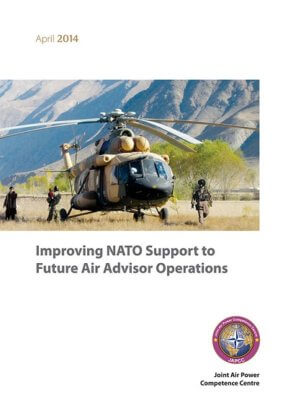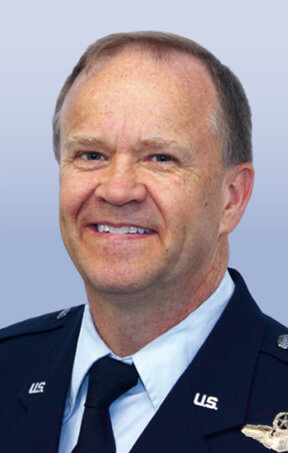Overview
NATO has stated that it is committed to providing long-term political and practical support to Afghanistan via a new post-2014 mission to train, advise and assist the Afghan National Security Forces. Additionally, the 2010 NATO Strategic Concept highlighted the need to develop the capability to train and develop local forces in crisis zones, so that local authorities are able as quickly as possible, to maintain security without international assistance. Therefore, after the conclusion of combat operations in 2014, it is imperative that NATO addresses the requirement to sustain an enduring partnership with Afghanistan. It must also address the requirement to train, advise and assist non-NATO nations where common interests are shared with NATO or NATO security interest are involved.
The Aviation Security Force Assistance (AvSFA) capability addressed in this study is an important aspect of meeting these requirements. It not only can improve internal and regional security and stability but can create an environment for improved economic development as well. This insightful and informative document makes many challenging, yet essential recommendations to help develop and realize this important capability. NATO must begin work on implementing these recommendations as soon as possible in order to expeditiously create a valued, respected and noble capability that is in harmony with the honourable history of previous NATO engagement operations.
Executive Summary
Partnership building has been and will be an important component of NATO’s overall strategic approach. The NATO 2010 Strategic Concept specifically states that partnership building will be a key element of NATO’s future strategic requirement. All three essential core tasks listed in NATO’s current Strategic Concept (collective defence, crisis management and cooperative security) are supported by a robust SFA capability. Despite this, NATO currently lacks a unified concept to meet this strategic requirement. The JAPCC was requested by the NATO Air Training Command – Afghanistan (NATC-A) to perform a study regarding NATO’s ability to assess, train, advise and assist foreign aviation forces in airpower employment, sustainment and force integration. The objectives of this study are to define the terms ‘Air Advisor’ and the Air Advisor mission and determine the anticipated future mission requirements. It then identifies the gaps between those requirements and current capabilities and makes recommendations on how best to fill those gaps.
Methodology
The data in this study was gathered from a variety of sources. Questionnaires were received from current and formers members of NATC-A from a variety of nations and positions to include a former NATC-A Commanding General. Personnel from the NATO Allied Command Transformation (ACT) Concept Development Branch, NATO Special Operations Headquarters (NSHQ), the United States Air Force (USAF) Air Advisor Academy (AAA), USAF HQ / A3O-Q Irregular Warfare Division, the USAF HQ AETC / A3Q Expeditionary Training division, United States Air Force Central Command (USAFCENT) / A3T Air Advisor Training Division, and the Joint Center for International Security Force Assistance (JCISFA) were interviewed. Information from NATO public websites, relevant, unclassified Coalition / Alliance, Joint, and National doctrine, guidance and Tactics, Techniques and Procedures (TTP) were referenced. RAND Corporation studies, open source articles, research reports, and research papers on SFA and Air Advising were studied.
Definitions
Regarding the definition of the ‘Air Advisor mission’, the term was determined to be limiting in that advising only covered a fraction of the mission requirements. (The requirements include organize, train, equip, advise, mentor, assist, etc.) Based on this, it is proposed that this term be replaced by ‘Aviation SFA’ in this document. A definition for AvSFA was developed using ACT’s proposed NATO definition of SFA. The term AvSFA is defined as ‘all NATO activities that develop or directly support the development of local forces and their associated institutions to improve their airpower capabilities’. NATO Air Advisors are defined as ‘personnel participating in the NATO mission who provide assistance to local forces and their associated institutions to generate and organize, train, enable, advise, and mentor foreign security forces and their supporting institutions to improve their airpower capabilities’.
The unique tasks and activities associated with improving a foreign nation’s airpower capabilities are what make AvSFA unique from SFA. The 2011 US Air Force Global Partnership Strategy defines a term it calls ‘Aviation Enterprise Development’ (AED), which provides insight on these unique AvSFA tasks and activities. AED is defined as ‘the plans, programs, and activities undertaken to develop the system of systems necessary for a nation to optimize employment of national aviation resources’.
Recommendations
The goal of AvSFA efforts must be congruent and coordinated with an overall NATO strategic SFA program. These efforts must be informed by the common strategic goals of the Host Nation (HN)1 and NATO, strengthen international and regional security and when required, deter and defeat aggression. The AvSFA capability can be an important tool in NATO’s peacetime engagement activities, during times of crisis or in irregular warfare operations. By synchronizing AvSFA efforts with the engagement efforts of other NATO political and military bodies, NATO can improve the ability of designated nations to achieve and sustain internal security, spur economic development, and enhance regional stability. If these efforts are successful, NATO contingency response requirements can be reduced or eliminated.
NATO must use the lessons learned from previous SFA operations to build a standing team of SFA expertise that it can use when the requirement is needed. NATO’s goal must be to build a comprehensive and coherent AvSFA capability that is supported not only through the NATO Defence Planning Process (NDPP) process but by involved leadership and sound guidance. The AvSFA mission must be a component of NATO’s overall SFA strategy and should be used in coordination with other NATO SFA efforts. NATO must develop AvSFA doctrine and TTP that provides NATO Air Advisors with sound guidance that is applicable to all areas where they may operate. NATO can choose to use the relevant documents from member nations that have experience in the mission as a reference for development of this guidance. Most importantly, once this doctrinal foundation is developed the distinctive mission requirements and unique challenges of NATO AvSFA operations must be considered in the guidance.
NATO leadership must develop a staff structure that understands the mission and properly advocates for it in the NDPP process. In addition, it must foster interoperability using standardized doctrine and TTP. These staff elements must address a myriad of AvSFA mission requirements. These include the development and advancement of policy and doctrine, coordination of AvSFA efforts with other SFA efforts, coordination and management of the defence planning process in support of AvSFA requirements and development of AvSFA TTP based on the lessons of previous AvSFA operations.
Although NATO has an AvSFA capability as evidenced by support for the ongoing mission in Afghanistan, it is currently done ad hoc. This leads to problems which could be lessened by adopting the proposed solutions and essential actions presented in the ‘Recommendations’ chapter. Based on the fact that NATO is currently engaged with 41 countries as partners and the strong emphasis the current NATO strategic concept places on partnership building, the anticipated future AvSFA mission requirement is expected to remain high. According to the NSHQ, there is an identified gap between the NATO’s current AvSFA capability and the expected requirement. Although there are clear advantages to standing up a new unit to support the mission, it may not be feasible with existing fiscal constraints. The option most likely to gain support within NATO is to establish a specially trained and resourced organization developed from an existing General Purpose Forces (GPF) unit that can be tasked with this mission. This unit would receive additional, specialized training that is managed by an organization that maintains standardization of a formalized AvSFA training syllabus. By following the recommendations in this document, NATO can develop a generic and comprehensive concept for NATO contributions in developing a host nation’s aviation enterprise and their supporting institutions.












